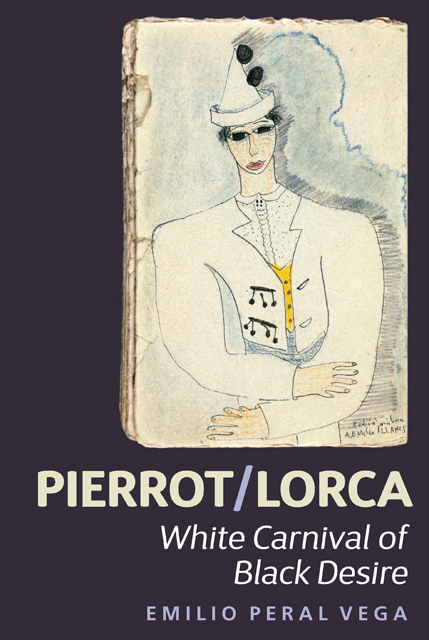Book contents
- Frontmatter
- Dedication
- Contents
- List of Illustrations
- Acknowledgements
- Prologue
- 1 A Modern Mask: From Deburau to The Tramp
- 2 First Examples of an Effeminate Pierrot: From Verlaine to Lorca
- 3 Pierrot/Lorca: Alter Ego for a Young Poet
- 4 Lorca/Pierrot: Between Painting and Theatre
- 5 Love Game and Masquerade: Dalí/Lorca
- 6 Perlimplín/Lorca/Pierrot: Frustrated Desire
- 7 A White Clown for a Black Desire: El público and Así que pasen cinco años
- Epilogue
- Bibliography
- Index
6 - Perlimplín/Lorca/Pierrot: Frustrated Desire
Published online by Cambridge University Press: 22 February 2023
- Frontmatter
- Dedication
- Contents
- List of Illustrations
- Acknowledgements
- Prologue
- 1 A Modern Mask: From Deburau to The Tramp
- 2 First Examples of an Effeminate Pierrot: From Verlaine to Lorca
- 3 Pierrot/Lorca: Alter Ego for a Young Poet
- 4 Lorca/Pierrot: Between Painting and Theatre
- 5 Love Game and Masquerade: Dalí/Lorca
- 6 Perlimplín/Lorca/Pierrot: Frustrated Desire
- 7 A White Clown for a Black Desire: El público and Así que pasen cinco años
- Epilogue
- Bibliography
- Index
Summary
None of Lorca’s theatrical works offers such richness of interpretation as Amor de don Perlimplín con Belisa en su jardín, first written in 1926 but not premiered until 5 April 1933 at a gala performance at the Teatro Español in Madrid alongside La zapatera prodigiosa (the police closed down initial rehearsals in 1929 that were leading up to performances at the Sala Rex in Madrid). The play exhibits a versatility of which its author was well aware; interviewed in 1935 on which was his most accomplished play, Lorca replied unequivocally: ‘si me pregunta usted qué obra mía me gusta más, le diré que es una obra pequeña que por su lirismo verdadero ninguna compañía profesional se atreve a poner y que se llama Amor de don Perlimplín con Belisa en su jardín’ (Martín, 2013: 369).
The play was considered a minor piece by the majority of Lorca scholars until well into the 1990s, perhaps as a result of its apparent simplicity, which is inspired by one of the most fertile themes of Spanish literature since the Middle Ages: the unequal marriage between an older man and a younger woman. Lorca presents us with Perlimplín who, under the counsel of his servant Marcolfa, decides to marry Belisa, a young and beautiful girl who is in turn spurred on by her mother, who is well aware of the riches amassed by the old man. A familiar tale of cuckoldry unfolds, but it contradicts a long tradition of complex tragedy. Perlimplín is conscious of his inability to satisfy his wife and makes up a ‘red-caped young man’, his alter ego, with a dual objective: to teach the frivolous Belisa a lesson in generosity and to experience the feeling of being sought after, for once in his life, by another. In the self-sacrificial act that ends the piece, Perlimplín stages his own death at the hands of the furtive youth, while Belisa, still unable to understand the magnitude of the events as she cradles the inert body of her husband, enquires as to the whereabouts of ‘aquel hermoso adolescente al que nunca verás el rostro’ (García Lorca, 1996a: 188).
- Type
- Chapter
- Information
- Pierrot/LorcaWhite Carnival of Black Desire, pp. 95 - 108Publisher: Boydell & BrewerPrint publication year: 2015

